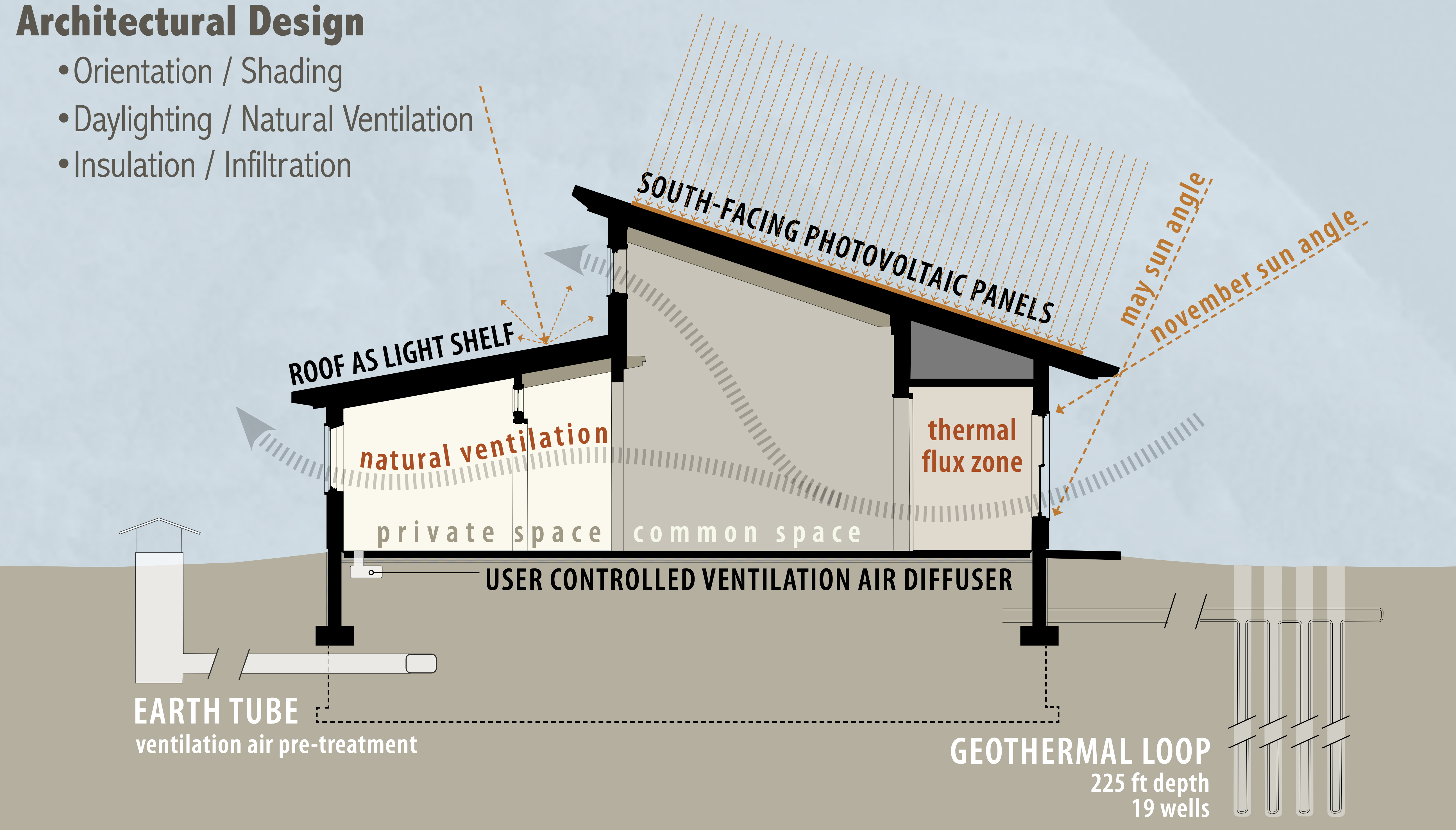Sustainability
Starts with design and selecting building envelop materials that are friendly to the environment, reduce waste, maximize energy efficiency, and have a long useful life.

Optimization of structural design leveraging Solar, Passive Energy Sources, and Structurally Insulated Panels
Orientated Strand Board "OSB" (that are on both sides of the Structural Insulated Panels or SIPs) are harvested from three-to-four-year-old plantation 'renewable' growth hardwoods utilizing 92% of the tree material, which are then replanted for the next crop. Whereas wood studs are cut from old-growth timber utilizing 64% of the tree.
Sustainability starts with design and selecting building envelop materials that are friendly to the environment, reduce waste, maximize energy efficiency, and have a long useful life.Orientated Strand Board "OSB" (that are on both sides of the Structural Insulated Panels or SIPs) are harvested from three-to-four-year-old plantation 'renewable' growth hardwoods utilizing 92% of the tree material, which are then replanted for the next crop. Whereas wood studs are cut from old-growth timber utilizing 64% of the tree.

Optimization of structural design leveraging Solar, Passive Energy Sources, and Structurally Insulated Panels

When combined with Solar, Structurally Insulated Panels (SIP's) are the most energy efficient and sustainable construction system
- SIPs reduce wood waste by 78%.
- SIPs eliminate conventional use of wood studs for framing which reduces the number of trees cut by 80%.
- SIP insulation uses closed-cell polystyrene foam beads filled with air that is 60% much more energy efficient than fiberglass or cellulous insulation.

Using on-site harvested trees for beams and flooring plus SIPs eliminate the use of traditional lumber resulting in improvements in forest management, reduced CO2 output and increased CO2 absorption.
ADVANTAGES OFBUILDING WITH SIPs
- Energy Efficiency: According to the Federal Lab in Oak Ridge, Tenn. SIPs are 60% more energy efficient than conventional 2x6 wood stud framed structures which reduces utility cost by 36%.
- Energy Savings Payback: Begins immediately because SIP construction cost less than conventional construction; plus add to this the monthly utility savings of 35%. Plus, if you add Solar to the SIPs the monthly savings increases to 48%.
- LEED Point Awards from U.S. Green Building Council SIPs energy savings of 60% earns 16 LEED points (62% of Certified). SIPs energy efficiency reduces the amount of solar energy required thus scaling down the size and cost of the Solar PV system by 36%. Plus, you receive a Federal Energy Tax Credit of 22% (in year 2021) and Solar adds 3 more LEED points for a total of 73% of Certified.
- Environment: SIPs use environmentally friendly materials.
- Stronger: SIPs are 46% stronger than 2x6 wood stud framed lumber construction and with additional fasteners can be engineered to withstand Category-5 hurricane winds of 158 mph.
- Fire Resistance: 1-hour fire ratings that will lower cost of insurance.
- Speed of Construction: Utilizing ABT's Lean Assembly Process reduces construction time for exterior walls and roof by 90%.”
- Warranty: 20-years
- SIPs reduce wood waste by 78%.
- SIPs eliminate conventional use of wood studs for framing which reduces the number of trees cut by 80%.
- SIP insulation uses closed-cell polystyrene foam beads filled with air that is 60% much more energy efficient than fiberglass or cellulous insulation.
ADVANTAGES OFBUILDING WITH SIPs

When combined with Solar, Structurally Insulated Panels (SIP's) are the most energy efficient and sustainable construction system
- Energy Efficiency: According to the Federal Lab in Oak Ridge, Tenn. SIPs are 60% more energy efficient than conventional 2x6 wood stud framed structures which reduces utility cost by 36%.
- Energy Savings Payback: Begins immediately because SIP construction cost less than conventional construction; plus add to this the monthly utility savings of 35%. Plus, if you add Solar to the SIPs the monthly savings increases to 48%.
- LEED Point Awards from U.S. Green Building Council SIPs energy savings of 60% earns 16 LEED points (62% of Certified). SIPs energy efficiency reduces the amount of solar energy required thus scaling down the size and cost of the Solar PV system by 36%. Plus, you receive a Federal Energy Tax Credit of 22% (in year 2021) and Solar adds 3 more LEED points for a total of 73% of Certified.
- Environment: SIPs use environmentally friendly materials.
- Stronger: SIPs are 46% stronger than 2x6 wood stud framed lumber construction and with additional fasteners can be engineered to withstand Category-5 hurricane winds of 158 mph.
- Fire Resistance: 1-hour fire ratings that will lower cost of insurance.
- Speed of Construction: Utilizing ABT's Lean Assembly Process reduces construction time for exterior walls and roof by 90%.”
- Warranty: 20-years

Using on-site harvested trees for beams and flooring plus SIPs eliminate the use of traditional lumber resulting in improvements in forest management, reduced CO2 output and increased CO2 absorption.